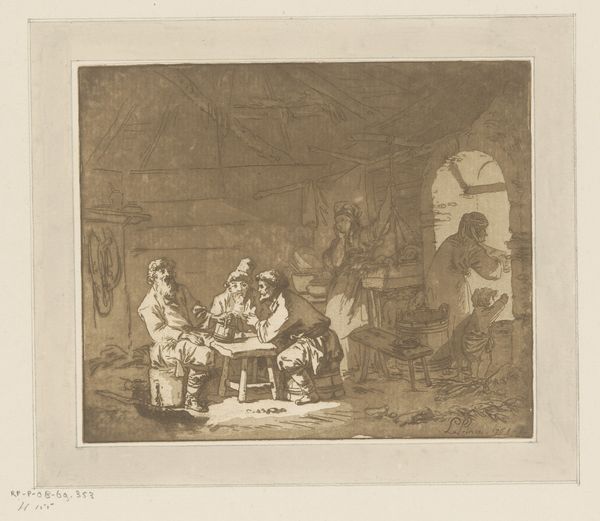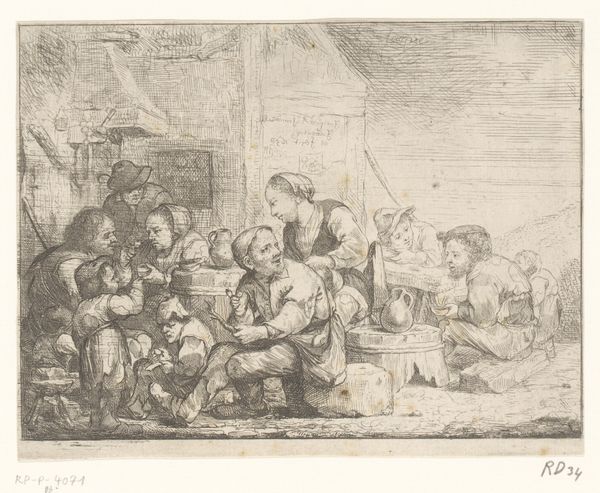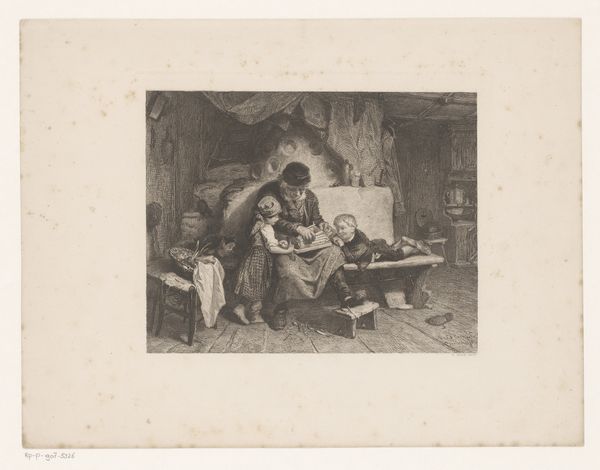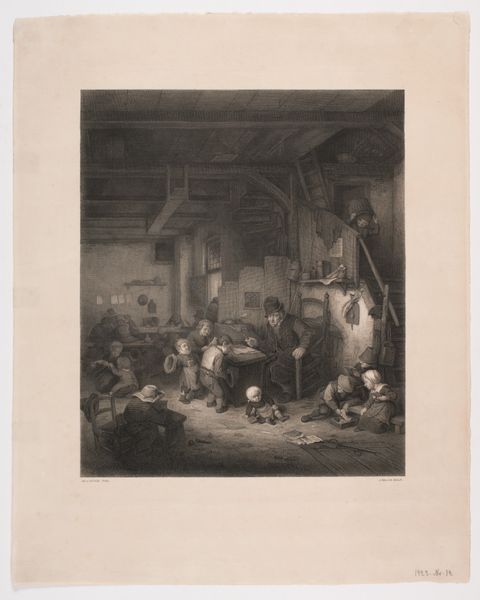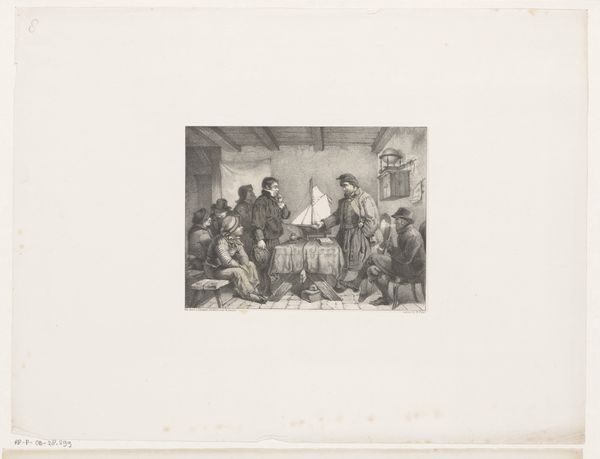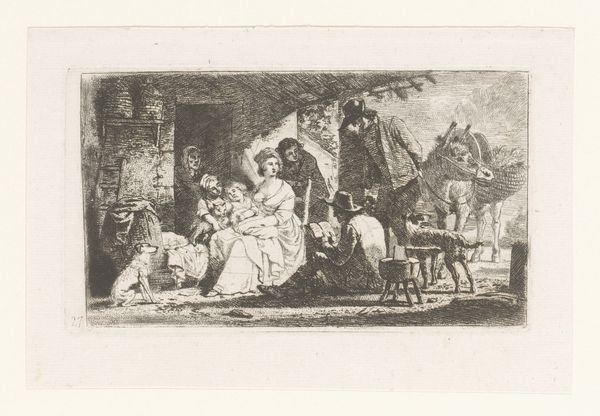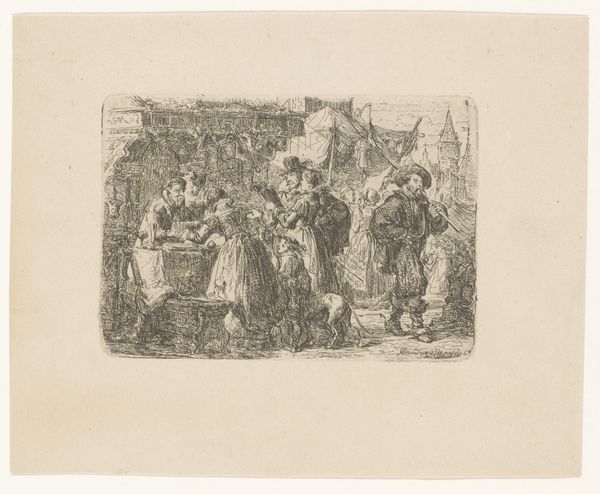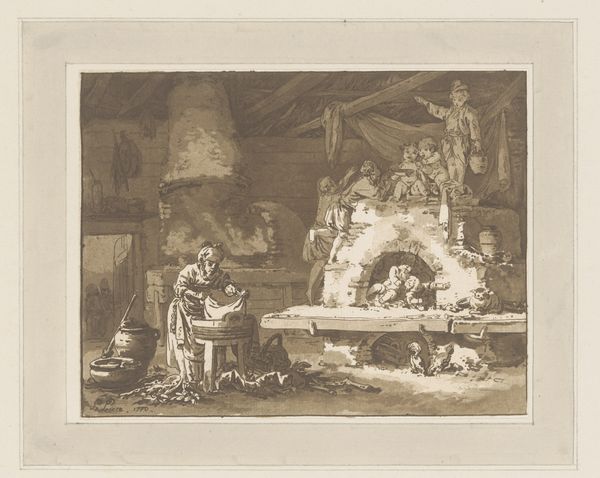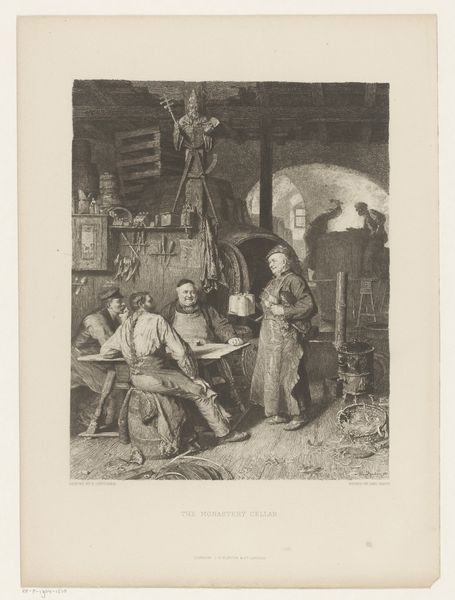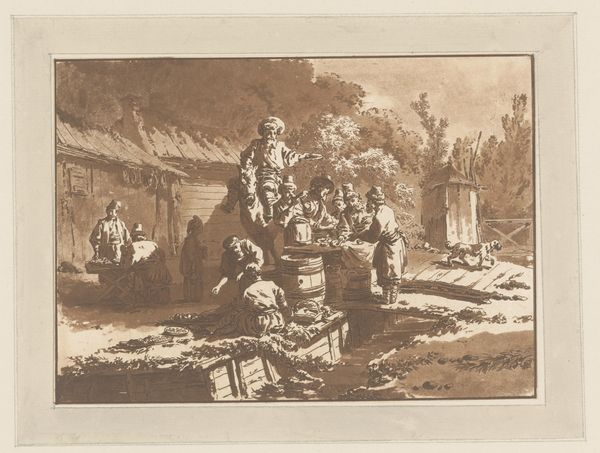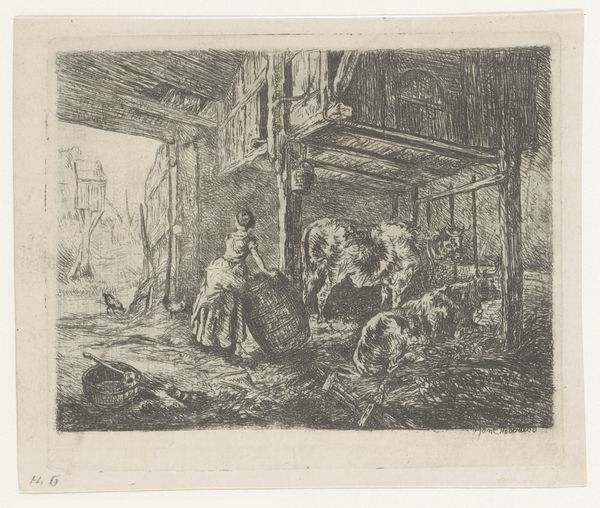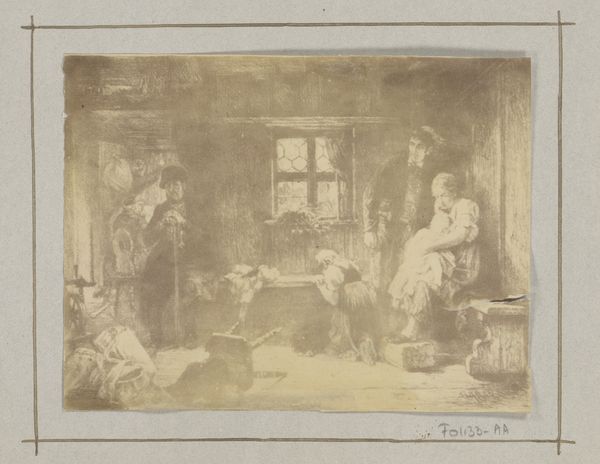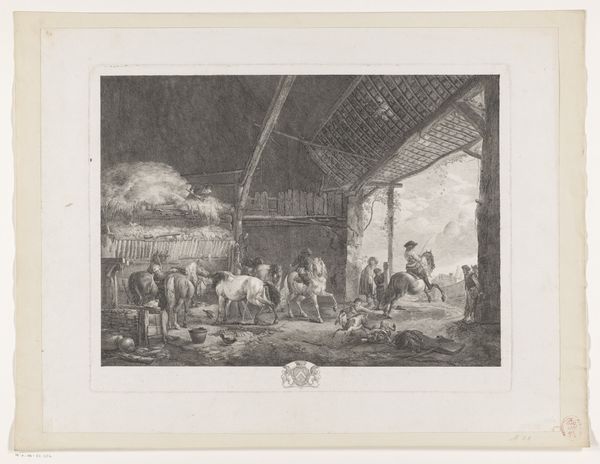
Herberginterieur met figuren en in het midden een vrouw die een kind voedt 1768
0:00
0:00
jeanbaptistleprince
Rijksmuseum
Dimensions: height 144 mm, width 180 mm
Copyright: Rijks Museum: Open Domain
Curator: Editor: Here we have Jean-Baptiste Leprince’s "Herberginterieur met figuren en in het midden een vrouw die een kind voedt," created in 1768. It's an ink drawing and depicts figures inside what appears to be a tavern or inn. It feels quite intimate, almost like a snapshot of everyday life. How would you interpret this work? Curator: Intimacy is an interesting point. Let's consider the materials. Leprince chose ink, a relatively accessible and affordable medium, to depict this scene of apparent domesticity and leisure. This inn, a place of commerce, is rendered with the immediacy afforded by drawing. What does the choice of ink, rather than, say, oil paints, tell us about Leprince's intended audience or the function of this image? Editor: I hadn’t really considered the ink in relation to commerce, but that’s a great point! Maybe ink allowed for easier reproduction or circulation compared to more involved mediums? It’s also interesting to consider this artwork alongside ideas of accessibility of everyday life being depicted to a potential wealthier clientele. Curator: Precisely. Ink facilitates reproduction, potentially reaching a wider audience beyond the elite who could afford oil paintings. And notice the figures. How are they positioned in relation to their labor and their leisure? There’s a mother breastfeeding, a worker gesturing, some playing cards... all existing in a shared space. Do we read it as voyeuristic? Perhaps even celebratory? What materials in the foreground help establish a setting for such interpretations? Editor: The basket filled with goods definitely roots it to a sense of working life. So it depicts the intermingling of different activities within a commercial setting... almost collapsing those societal structures. Curator: And look closely at that building itself. It isn't grandiose architecture; it seems quite basic and humble. The focus is not on extravagant surroundings but on the activities and interactions taking place within this common space. What impact do you think this depiction of a modest building, made accessible by an affordable and reproducible medium like ink, would have on its viewers at the time? Editor: It really reframes how I see it – the materials and the setting really push it from just being a scene into more of a commentary on labor and society. Curator: Indeed. By analyzing the material and social context, Leprince's seemingly simple drawing becomes a fascinating commentary on 18th-century life and the blurring of social boundaries through commerce.
Comments
No comments
Be the first to comment and join the conversation on the ultimate creative platform.
